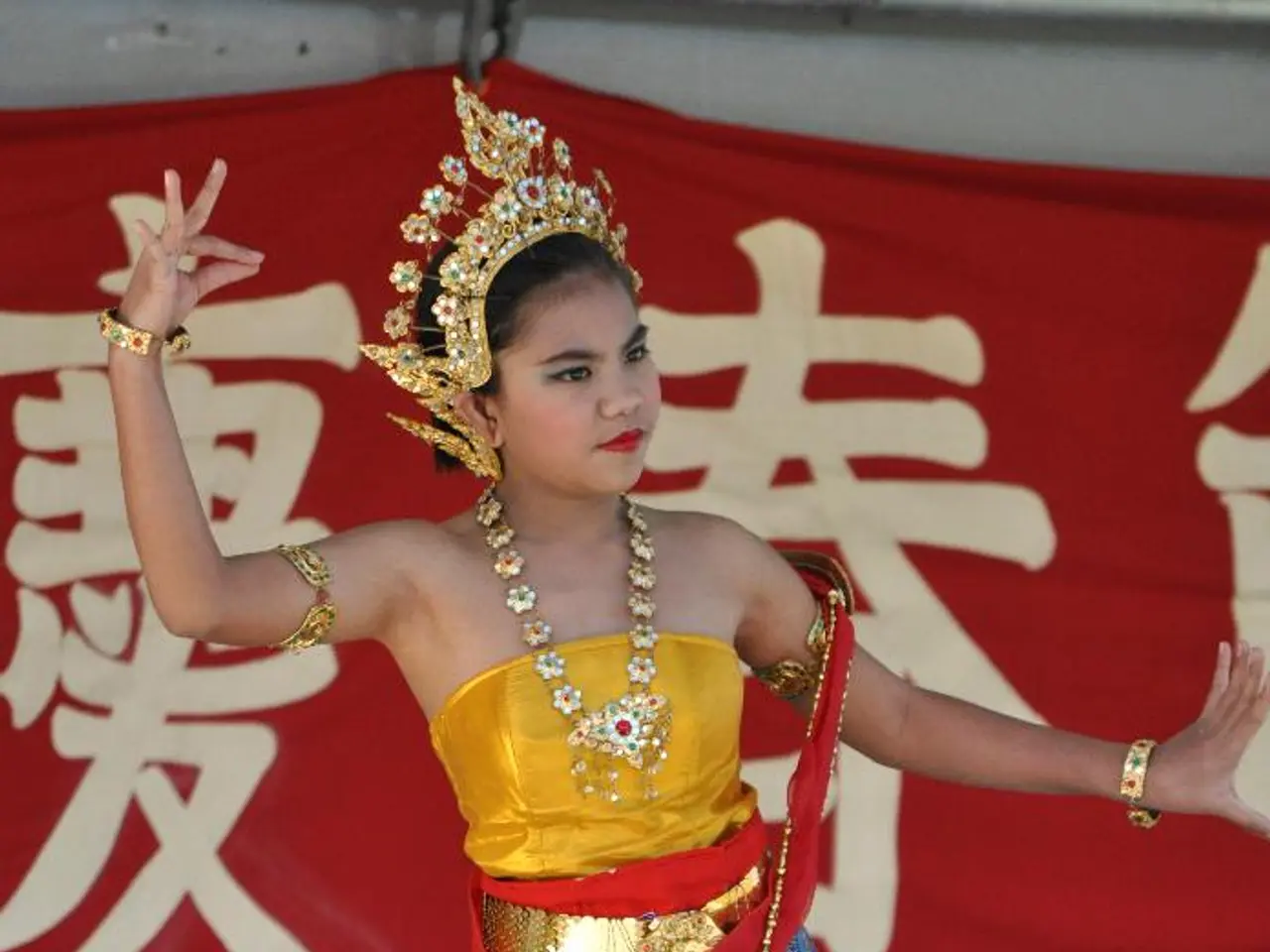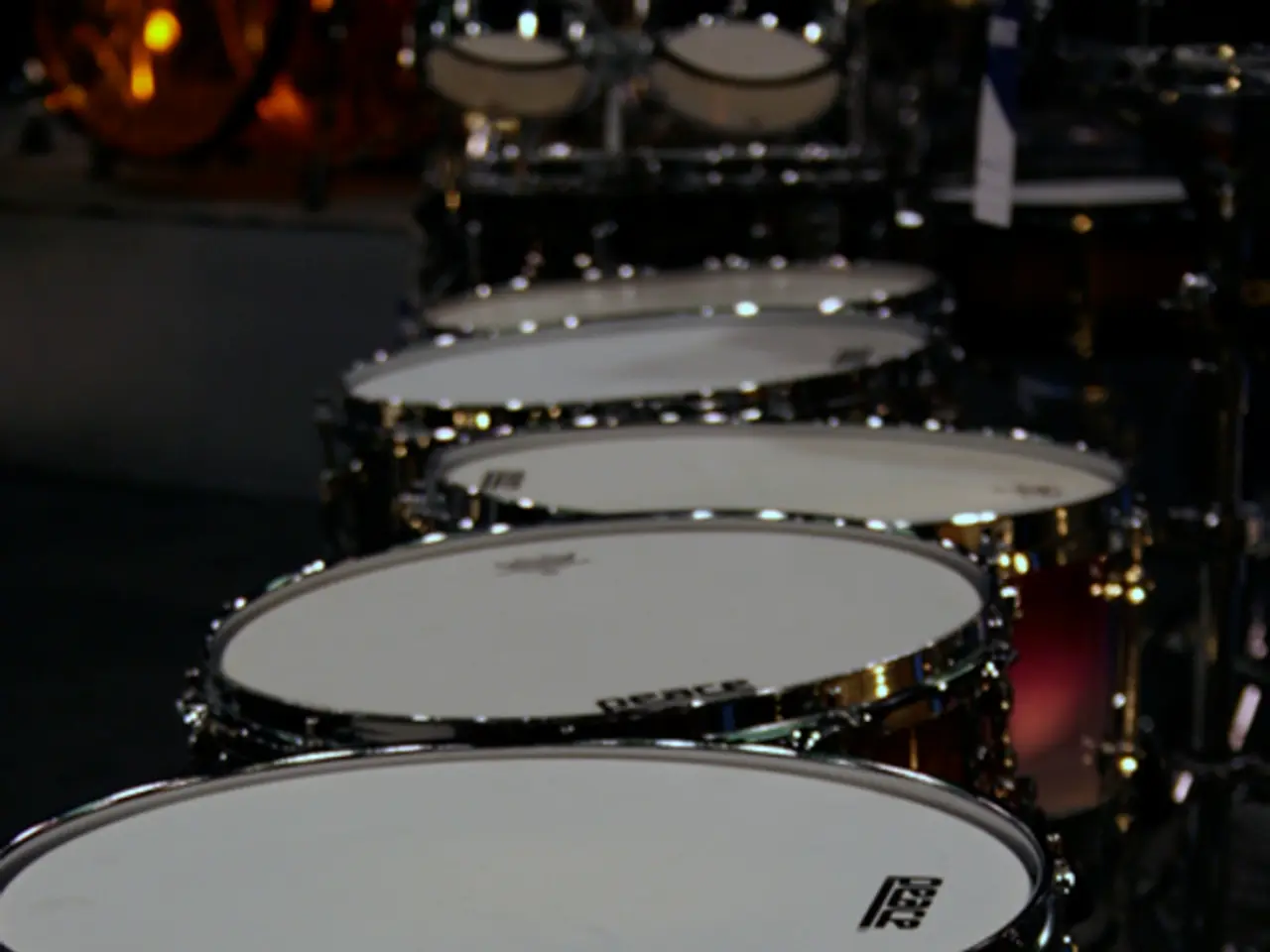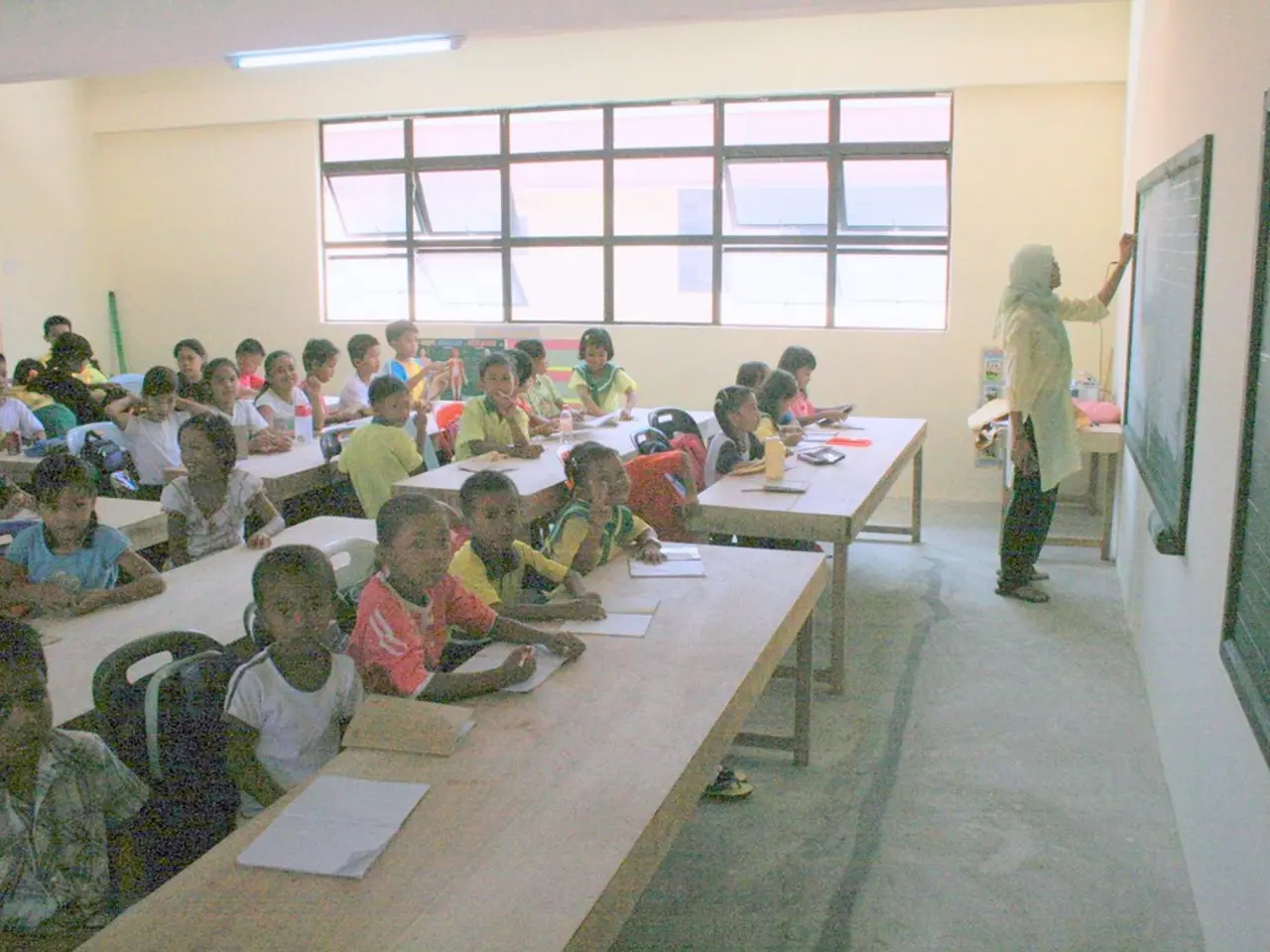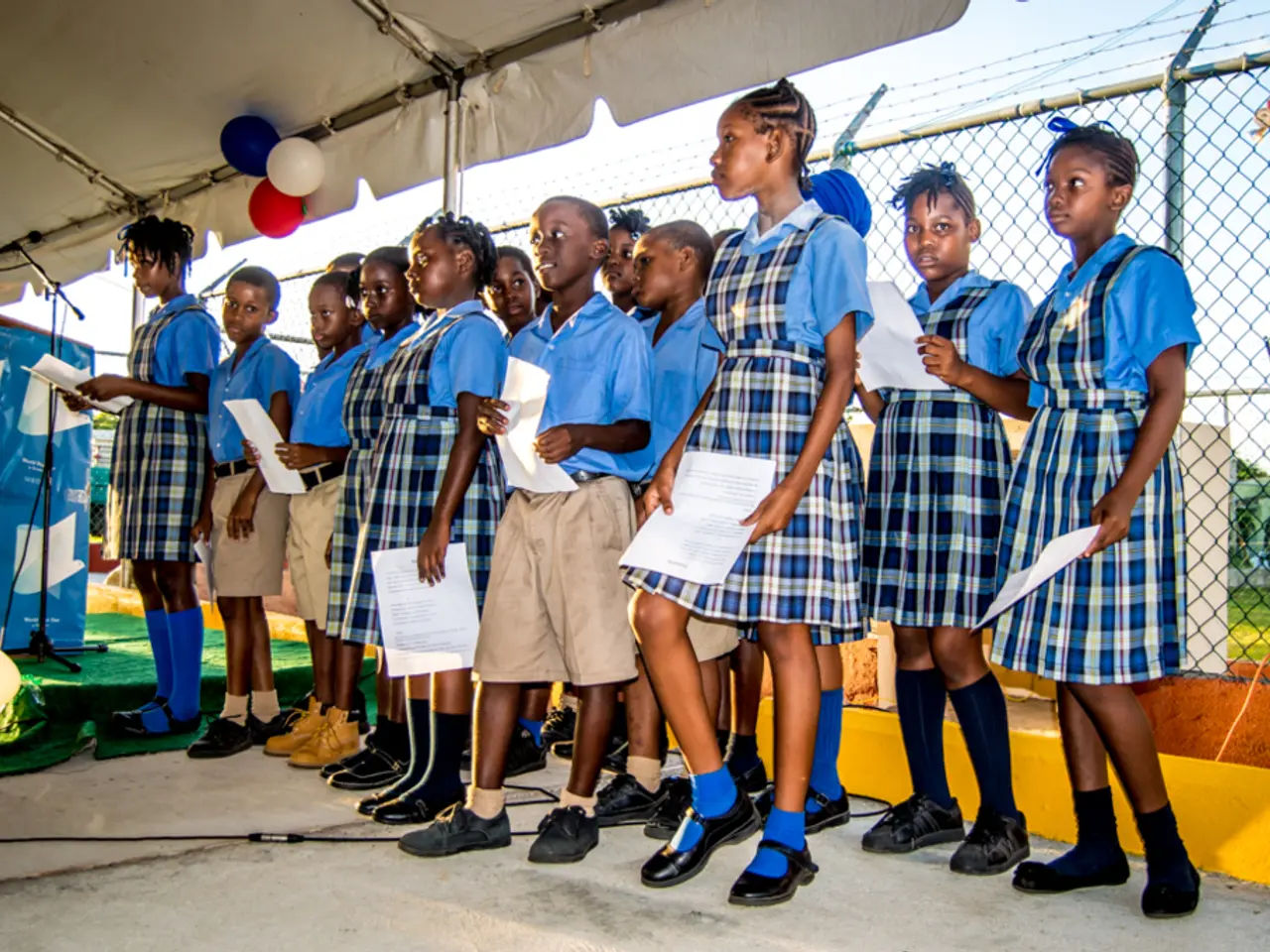Detailed Summary and Theme of Bharat Muni's Natyashastra Revealed
Bharata Muni's Natya Shastra: A Foundational Text Shaping Indian Classical Arts
Bharata Muni's Natya Shastra, an ancient Indian treatise, has profoundly influenced Indian classical arts, particularly theatre, dance, and music, by codifying their principles, techniques, and aesthetics. Written between 200 BCE and 200 CE, this significant text is often referred to as the "Bible of Indian theatrical arts"[1].
The Natya Shastra systematically outlines the rules for composing dramatic plays (nataka), staging (including playhouse construction), acting techniques, and emotional expressions to connect performers and audiences, illustrating a comprehensive dramaturgy tradition in India[1][4].
One of the key aspects of the Natya Shastra is its codification of dance. Bharata’s text formalizes the use of specific gestures (mudras), facial expressions, and movements, which serve as the basis for all Indian classical dance styles such as Bharatanatyam, Kathak, Odissi, and others. These classical dances retain core vocabularies and spiritual meanings derived from the Natyashastra, often viewed as an offering to the gods and a medium to narrate cultural, religious, and mythological stories[2][3].
The treatise also encompasses musical parameters complementing dance and drama, laying down guidelines for musical scales, rhythms, and accompaniment, ensuring synchronization between music and performance arts[1].
The Natyashastra conceptualizes performance arts not merely as entertainment but as a devotional act, binding audiences and performers spiritually and culturally, thus preserving and transmitting India’s rich heritage and values across generations[3].
The Natyashastra identifies four main elements that form the foundation of dramatic performance: Rasa, Bhava, Abhinaya, and Raga and Tala. Rasa is the emotional essence or aesthetic experience that a play evokes in the audience, and there are eight primary Rasas: Shringara, Hasya, Karuna, Raudra, Veera, Bhayanaka, Bibhatsa, and Adbhuta[5]. Abhinaya is a critical aspect of the Natyashastra, helping to communicate the emotions of the characters to the audience, creating a deep emotional connection[6].
The text presents a five-act structure for a classical play: Prakriti, Riti, Sanketa, Vidhikriti, and Anukriti[7]. Additionally, Abhinaya is categorized into Angika, Vachika, Aharya, and Sattvika[8].
Despite originating around 200 BCE to 200 CE, its principles continue to underpin classical Indian dance, theater, and music traditions, influencing contemporary performances and pedagogy, and maintaining a living link to India’s ancient artistic legacy[1][2].
In summary, Bharata Muni’s Natya Shastra anchors Indian classical arts by providing a comprehensive theoretical and practical framework that harmonizes drama, dance, and music, deeply embedding them within India's religious, cultural, and aesthetic ethos.
[1] Chakravarty, S. (2012). The Natya Shastra of Bharata Muni: A Study of the Ancient Indian Treatise on Drama, Dance, and Music. Motilal Banarsidass Publ.
[2] Ganapati Sthapati, S. (1992). Bharata Muni's Natya Shastra: A Study of the Ancient Indian Treatise on Dance and Drama. Abhinav Publications.
[3] Kodithuwakku, B. (2000). The Natyashastra of Bharata Muni: An Exposition of the Indian Theory of Drama. D.K. Printworld Ltd.
[4] Kothari, R. (2015). The Natyashastra of Bharata Muni: A Study of the Ancient Indian Treatise on Drama, Dance, and Music. Rupa Publications.
[5] Kunjunni Raja, K. (1968). The Natyashastra of Bharata Muni: A Study of the Ancient Indian Treatise on Drama, Dance, and Music. Motilal Banarsidass Publ.
[6] Kuppuswamy, S. (2007). Bharata Muni's Natyashastra: A Study of the Ancient Indian Treatise on Drama, Dance, and Music. Abhinav Publications.
[7] Krishnamoorthy, T. (1998). Bharata Muni's Natyashastra: A Study of the Ancient Indian Treatise on Drama, Dance, and Music. Rupa Publications.
[8] Mishra, S. (2010). Bharata Muni's Natyashastra: A Study of the Ancient Indian Treatise on Drama, Dance, and Music. Motilal Banarsidass Publ.
- The Natya Shastra, a foundational text in Indian classical arts, has not only influenced the principles, techniques, and aesthetics of theatre, dance, and music, but also elucidates the themes of education, self-development, and entertainment, as it outlines the emotional experiences (Rasas) and expressive techniques (Abhinaya) for the characters in dramatic performances.
- Bharata Muni's Natya Shastra extends beyond dance and drama, as it includes guidelines for music, establishing musical scales, rhythms, and accompaniment, thereby creating a harmonious link between the performance arts and learning.
- The principles presented in the Natyashastra, such as the five-act structure for classical plays and the four main elements like Rasa, Bhava, Abhinaya, and Raga and Tala, continue to shape contemporary performances, pedagogy, and the cultural preservation of Indian classical arts, linking the ancient legacy to modern learning and entertainment.




